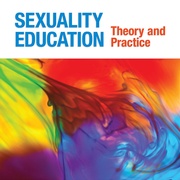40 Years of Sexuality Education: What's Changed?
By Clint Bruess, EdD, CHES, and Elizabeth Schroeder, EdD, MSW | October 16, 2018
Dean Emeritus, University of Alabama at Birmingham (CB) and Sexuality Educator, Trainer and Consultant, Elizabeth Schroeder Consulting (ES)
We’ve just finished writing a new edition of our book on sexuality education, which has been in print for almost 40 years. That’s a long time! A lot of people ask us, “What’s changed in sex ed over so many years?” The easy answer is, a lot has changed—and yet an astonishing amount has stayed the same.
Traditional sexuality education in the United States was established at the turn of the 20th century as a response to health and cultural issues. It was designed to teach people how to avoid “venereal” diseases and remain morally pure. Sexual behaviors were not to be engaged in outside of the context of heterosexual marriage–and even then, the rules governing these behaviors and relationships were applied differently to cisgender men than they were to everyone else.
From the very start, sex ed was set up as a way to have young people avoid certain physical and social “ills.” It wasn’t designed to promote healthy development or do anything else positive. This reverberates strongly in much of our sex ed of today. Most schools are still thinking of sexuality education as teen pregnancy and STD/HIV prevention–or are at least starting from there.
It is challenging to try to teach about sexuality in positive ways when the dominant culture frames it as avoiding certain possible outcomes. This is, in fact, one of the prime challenges we have aimed to address in our book Sexuality Education: Theory and Practice (just published in its seventh edition). It’s a framework we’ve aspired to since the first edition of the book was published almost 40 years ago.
Sexuality Education: Theory and Practice, Seventh Edition
Clint E. Bruess, EdD, FASHA, FAAHE, and Elizabeth Schroeder, EdD, MSW. Sexuality Education: Theory and Practice (Seventh Edition). Scotts Valley CA: ETR, 2018.
ETR is proud to offer this just-published new edition of an outstanding standard in the field. The text is a useful resource for new students in the sexuality education field as well as for seasoned professionals seeking current information and updates on successful teaching methods. Highly recommended by an impressive group of researchers and educators. Learn more here.
New: Young People Take the Lead as Advocates
Some things are changing in sexuality education. Yes, many adults continue to be nervous or uncertain about teaching young people about sexuality. Some proactively oppose sex education. However, an exciting change taking place in sexuality education today is how much and how enthusiastically young people themselves are taking the lead in advocating for the sex ed they want and need.
 Young people want sex ed content that goes beyond body parts, pregnancy and STI prevention. They’re pushing to ensure sex ed is inclusive and affirming of people of all backgrounds and identities. They are leading the charge for lessons about consent within relationships. They are embracing perspectives that challenge traditional patriarchy and the gender role stereotypes that come with the antiquated idea: “boys will be boys.”
Young people want sex ed content that goes beyond body parts, pregnancy and STI prevention. They’re pushing to ensure sex ed is inclusive and affirming of people of all backgrounds and identities. They are leading the charge for lessons about consent within relationships. They are embracing perspectives that challenge traditional patriarchy and the gender role stereotypes that come with the antiquated idea: “boys will be boys.”
The powerful voices of youth are having a significant impact on what is being offered in middle and high schools, colleges and communities around the country.
Technology: Good News and Bad
Since the widespread availability of the internet beginning in the 1990s, people who previously encountered obstacles accessing sexuality-related information have been able to receive answers to their questions. Young people living in states where sex ed is either not taught at all, or where sex ed only teaches about abstinence, have been able to receive life-enhancing, sometimes life-saving information. The internet has also enabled young people who are members of marginalized communities (such as LGBTQ+ youth), especially those living in rural areas where the likelihood of finding others of one’s own community is much lower, to find online connections and support.
While the technology age has helped increase access to sexuality information, it has also presented significant impediments. Much of what is available online is inaccurate. Some of it is being presented by individuals who have no background or training in sexuality education. And the easy access to free online porn means young people are often consuming images that are intended for adult fantasy. Youth take those images to be representative of real life sexual behaviors and relationships.
 The so-called “sexuality education” young people receive from porn is more explicit, and therefore clearer, than anything they could receive in a classroom setting—but it’s also misinforming them and reinforcing cultural biases, stereotypes and prejudices about who can or should be having sex, power and privilege, and much more.
The so-called “sexuality education” young people receive from porn is more explicit, and therefore clearer, than anything they could receive in a classroom setting—but it’s also misinforming them and reinforcing cultural biases, stereotypes and prejudices about who can or should be having sex, power and privilege, and much more.
Beyond the internet, various educational technologies available for teaching about sexuality (formally or otherwise) are being developed at an incredible rate. Adult educators are often far behind their learners when it comes to integrating technology into the learning environment in meaningful ways. This is another way in which young people are taking the lead in sexuality education. Young people know technology better than many adult educators. If adult educators see sexuality education as a partnership, they will be able to integrate young people’s knowledge about technology with the educators’ knowledge about sexuality for a more meaningful learning experience.
How Can Sexuality Educators Keep Up?
Educators often feel they are starting from scratch when it comes to developing lesson plans in sexuality education. Not true! There are curricula, lessons, and professional development opportunities in communities and states around the country, as well as online.
Beyond finding a good curriculum or lesson, sexuality educators need to stay up-to-date on the current data, policies and trends relating to sexuality. We suggest joining the email lists of national and state-level sexuality education organizations. This gives educators easy access to the information they need to develop and implement a sound sexuality education program.
In addition, national and local conferences provide great opportunities for learning, sharing and networking for sexuality educators. It’s also useful to pay attention to what goes on in the media related to sexuality—cultural messaging, controversy, research and what’s popular with youth, for example. We encourage educators and counselors to help others, both professionals and non-professionals, learn more about sexuality education.
A partial list of sexuality education organizations (which also appears in our book), can be found here.
Predictions for the Future
There is a lot of research about what is most effective when it comes to teaching about sexuality. We still have a lot to learn. But if sexuality educators today simply practice what we already know is effective in sexuality education, the future of sex ed should be bright.
 For example, we know that common characteristics of effective programs include lasting a sufficient length of time, using leaders who believe in the program and have appropriate training, addressing peer pressure, teaching communication skills, and emphasizing the most comprehensive, inclusive and affirming aspects of human sexuality.
For example, we know that common characteristics of effective programs include lasting a sufficient length of time, using leaders who believe in the program and have appropriate training, addressing peer pressure, teaching communication skills, and emphasizing the most comprehensive, inclusive and affirming aspects of human sexuality.
At the same time, however, sexuality education is not provided in a vacuum, but rather within social and cultural contexts. Even with numerous studies indicating that the vast majority of parents around the U.S. support comprehensive sexuality education, schools far too often defer to a vocal minority who oppose teaching anything more than abstinence to youth. The potential for changing this ebbs and flows, usually with the national political climate, which trickles down to the state and community levels.
Sexuality educators cannot do this work alone. The good news is that none of us has to. We can and should collaborate with schools, faith communities and youth-serving organizations to provide sexuality education as part of overall positive youth development. We need to partner with parents and caregivers to reinforce at home what is being taught at schools and in the community. And we must never stop teaching the topics young people tell us are of greatest relevance to them in ways that build their feelings of self-esteem, self-efficacy and self-worth.
Clint E. Bruess, EdD, CHES, is Dean Emeritus, University of Alabama at Birmingham and Professor Emeritus, Birmingham-Southern College. He is a longtime teacher of graduate and undergraduate courses in sexuality education and in human sexuality. He can be reached at cbruess@bsc.edu.
Elizabeth Schroeder, EdD, MSW, is an international sexuality education and youth development expert. See her website here. She can be reached at info@drschroe.com.





